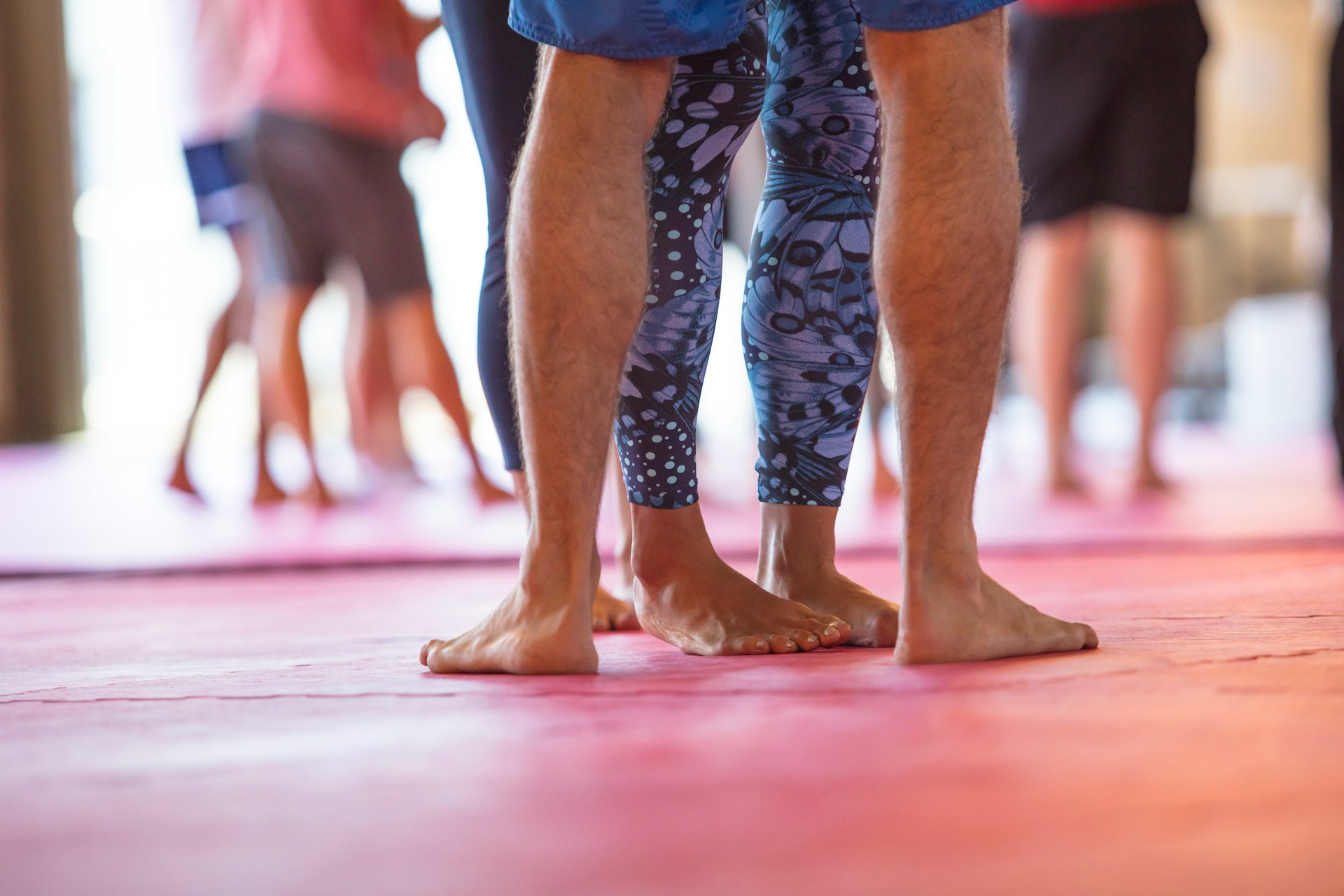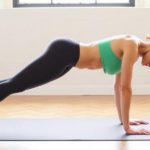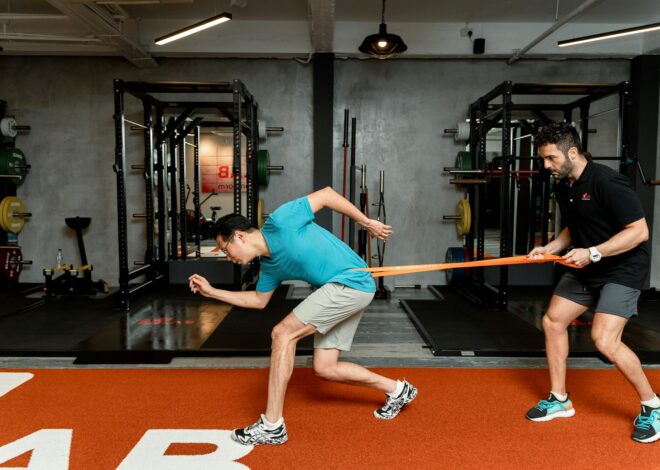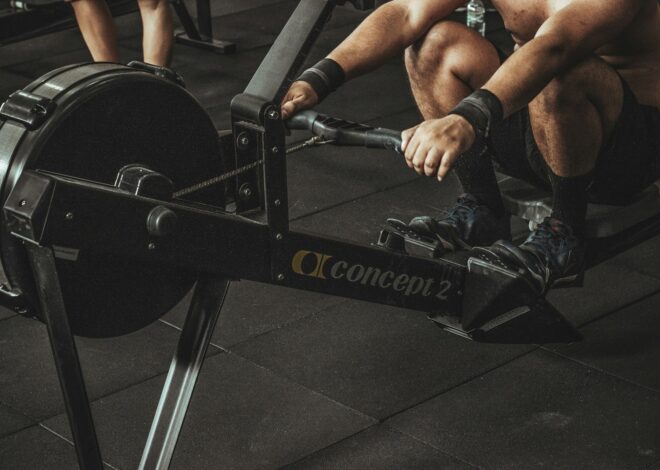
Yoga for Athletes: 10 Poses to Improve Flexibility and Reduce Injury Risk
The Benefits of Incorporating Yoga into an Athlete’s Training Regimen
Yoga is a valuable addition to an athlete’s training regimen, offering a multitude of benefits that can enhance overall performance and well-being. Through the practice of yoga, athletes can improve their flexibility, strength, and balance, which are essential components for optimizing athletic performance and preventing injuries. The focus on breath control in yoga can also help athletes enhance their lung capacity and endurance, facilitating better oxygen intake during strenuous physical activities.
Moreover, incorporating yoga into a training routine can aid in mental focus and concentration, crucial for athletes looking to maintain a competitive edge. The meditative aspects of yoga can help athletes learn how to center themselves, manage stress, and cultivate a strong mind-body connection, all of which are beneficial for success in sports. By integrating yoga into their training regimen, athletes can experience a holistic approach to fitness that addresses both physical and mental aspects of performance.
Understanding the Importance of Flexibility for Athletes
Flexibility plays a crucial role in an athlete’s performance and overall well-being. It allows for a greater range of motion, which can improve athletic ability and reduce the risk of injuries. Athletes with good flexibility are better equipped to move efficiently and effectively in their sports, translating to enhanced agility, speed, and power on the field or court.
In addition to physical benefits, flexibility also contributes to better posture and alignment, leading to improved body mechanics and reduced strain on muscles and joints. Athletes who prioritize flexibility training may experience fewer aches and pains, as well as improved recovery times after intense workouts or competitions. Incorporating regular flexibility work into training regimens can ultimately enhance overall athletic performance and longevity in sports.
How Yoga Can Help Improve Range of Motion and Joint Mobility
Yoga is a powerful tool for athletes looking to enhance their range of motion and joint mobility. Through a combination of dynamic stretching and strength-building poses, yoga helps to increase flexibility in muscles and connective tissues. This improved flexibility can lead to better joint mobility, allowing athletes to move more freely and efficiently during their activities.
Additionally, the focus on mindful movement and alignment in yoga can help athletes identify and address any asymmetries or imbalances in their bodies. By practicing yoga regularly, athletes can improve their overall body awareness and proprioception, which can contribute to better movement patterns and reduced risk of injury. Ultimately, incorporating yoga into a training regimen can lead to increased flexibility, improved joint mobility, and better overall performance in sports and activities.
The Role of Yoga in Preventing Common Sports Injuries
Yoga plays a crucial role in preventing common sports injuries by enhancing flexibility, strength, and balance in athletes. Through regular practice, athletes can improve their body awareness and alignment, reducing the risk of overuse injuries and strains. The focus on proper alignment in yoga poses can help athletes better understand their body mechanics, leading to more efficient movement patterns during sports activities.
Moreover, incorporating yoga into an athlete’s training regimen can also help address muscle imbalances and asymmetries that may contribute to injuries. By targeting specific muscle groups through various yoga poses, athletes can work towards achieving a more balanced and harmonious body, reducing the likelihood of injuries caused by muscular weaknesses or compensations. Ultimately, a consistent yoga practice can not only prevent common sports injuries but also promote overall physical well-being and longevity in an athlete’s career.
• Yoga enhances flexibility, strength, and balance in athletes
• Improves body awareness and alignment to reduce the risk of overuse injuries
• Focus on proper alignment leads to more efficient movement patterns during sports activities
• Addresses muscle imbalances and asymmetries that contribute to injuries
• Target specific muscle groups through various yoga poses for a balanced body
• Promotes overall physical well-being and longevity in an athlete’s career
Key Poses for Strengthening Muscles and Enhancing Stability
Yoga offers a range of key poses that are particularly effective in strengthening muscles and improving stability for athletes. One such pose is the Warrior II pose, which targets the legs, core, and shoulders while also aiding in balance and stability. Holding this pose requires engaging multiple muscle groups simultaneously, making it a great choice for enhancing overall strength and stability.
Another beneficial pose for athletes seeking to strengthen their muscles and improve stability is the Boat pose. This pose primarily targets the core muscles, including the abdominals, hip flexors, and lower back. By regularly practicing the Boat pose, athletes can build a strong core foundation, which is essential for maintaining stability and proper posture during various athletic movements and activities.
Yoga Poses to Improve Posture and Alignment for Athletes
Good posture is crucial for athletes to perform at their best and prevent injuries. Incorporating yoga poses that focus on improving posture and alignment can benefit athletes by strengthening the core muscles, lengthening the spine, and promoting proper alignment of the shoulders, hips, and spine. Poses like Mountain Pose, Tree Pose, and Warrior I encourage athletes to engage their core muscles, lift through the chest, and align the body in a way that supports optimal posture both on and off the field.
By regularly practicing yoga poses that target posture and alignment, athletes can enhance their body awareness and develop a greater sense of alignment in their movements. Poses like Downward Facing Dog, Cat-Cow, and Child’s Pose encourage athletes to stretch and release tension in areas that can affect posture, such as the back, shoulders, and hips. These poses also help athletes improve their spinal alignment and cultivate a mind-body connection that can translate into improved posture in their sports performance.
Breathing Techniques to Enhance Performance and Recovery
Athletes can greatly benefit from incorporating specific breathing techniques into their training routines to enhance performance and aid in post-workout recovery. Deep diaphragmatic breathing, where the breath is drawn in deeply through the nose, filling the lungs from the bottom up, and then slowly exhaled through the mouth, can help athletes increase their oxygen intake and improve endurance during physical exertion. This technique can also promote relaxation and decrease stress levels, leading to better overall physical and mental well-being.
In addition to deep diaphragmatic breathing, athletes can utilize rhythmic breathing patterns to synchronize their breath with their movements during exercise or sports performance. By coordinating breath with each movement, athletes can enhance their focus, concentration, and efficiency while reducing the risk of fatigue and injury. Practicing controlled breathing techniques not only optimizes oxygen flow to the muscles but also encourages a greater mind-body connection, allowing athletes to perform at their peak potential.
How Yoga Can Aid in Rehabilitation and Injury Recovery
Yoga can be a valuable tool in aiding athletes in their rehabilitation and recovery process after sustaining an injury. The practice of yoga helps to improve flexibility, increase range of motion, and strengthen muscles, which are all essential components in recovering from an injury. By incorporating gentle yoga poses and movements into their routine, athletes can gradually rebuild strength and stability, reducing the risk of re-injury while promoting healing.
In addition to the physical benefits, yoga also plays a crucial role in the mental and emotional aspects of rehabilitation. The mindfulness and breathwork practiced in yoga can help athletes manage pain, reduce stress, and enhance overall well-being during the recovery process. By fostering a mind-body connection, yoga empowers athletes to stay focused, positive, and resilient as they navigate the challenges of rehabilitation and work towards returning to their sport at full strength.
Tips for Athletes Looking to Start a Yoga Practice
When starting a yoga practice as an athlete, it’s important to approach it with an open mind and a willingness to learn. Begin by researching different styles of yoga to find one that aligns with your fitness goals and needs. Whether it’s vinyasa for dynamic movements or yin for deeper stretches, exploring various options can help you discover what works best for your body.
As you embark on your yoga journey, remember that consistency is key. Start with shorter sessions a few times a week and gradually increase both the duration and frequency as your body adapts. Setting realistic goals and staying committed to your practice will not only help improve your performance as an athlete but also enhance your overall well-being.
Incorporating Yoga into a Pre-Game or Pre-Workout Routine
Yoga can be a beneficial addition to an athlete’s pre-game or pre-workout routine. Engaging in a brief yoga session before hitting the field or gym can help athletes prepare both physically and mentally for the demands of their sport. The practice of yoga allows athletes to focus on their breath, center their mind, and create a sense of calmness before engaging in high-intensity activities.
Incorporating yoga poses that involve dynamic stretching and gentle movements can help athletes warm up their muscles, increase blood flow, and improve overall flexibility. By moving through a series of poses that target different muscle groups, athletes can enhance their range of motion and ensure that their bodies are primed for optimal performance. Additionally, incorporating yoga into their pre-game routine can help athletes prevent injuries by promoting proper alignment, balance, and stability.
The Best Time to Practice Yoga for Optimal Results
For athletes looking to maximize the benefits of their yoga practice, the best time to incorporate yoga into their routine is often in the morning. Starting the day with a yoga session can help set a positive tone for the day ahead, both physically and mentally. By taking the time to stretch and move through various poses in the morning, athletes can improve their flexibility, focus, and overall energy levels for the day.
Alternatively, some athletes may find that practicing yoga in the evening helps them unwind and relax after a long day of training or competing. Evening yoga sessions can serve as a way to release tension in the body, calm the mind, and promote better sleep quality. Athletes who struggle with winding down after a busy day may benefit from incorporating yoga into their evening routine to help them transition into a restful state before bedtime.
Common Misconceptions about Yoga for Athletes
One common misconception about yoga for athletes is that it is only suitable for those who are already flexible. While flexibility is certainly one aspect that yoga helps improve, the practice is beneficial for athletes of all levels and abilities. Yoga can actually help increase flexibility over time through consistent practice, making it a valuable addition to any athlete’s training regimen.
Another misconception is that yoga is just a form of stretching and relaxation, lacking the physical intensity needed for sports training. In reality, many yoga poses require a significant amount of strength, balance, and focus, making it a challenging workout for athletes. By incorporating dynamic movements, core engagement, and breath control, yoga can help athletes build functional strength and stability that can enhance their overall performance on the field or court.
How to Modify Poses for Individual Athletic Needs and Abilities
For athletes with specific physical limitations or injuries, modifying yoga poses is essential to ensure safety and effectiveness in their practice. When faced with restrictions in mobility or strength, adjustments can be made to asanas to accommodate individual needs. Props such as blocks, straps, or bolsters can be utilized to provide support and stability during poses, allowing athletes to gradually build strength and flexibility without compromising alignment.
Additionally, athletes with varying levels of experience or abilities can benefit from modifications to cater to their unique requirements. By adjusting the intensity or difficulty of poses, individuals can progress at their own pace and avoid potential strain or injury. This personalized approach to yoga helps athletes to develop a practice that is tailored to their specific athletic goals and capabilities.
The Mental Benefits of Yoga for Athletes, such as Stress Reduction and Improved Focus
Yoga has been widely recognized for its positive impact on athletes’ mental well-being. Through the practice of yoga, athletes can experience a significant reduction in stress levels, helping them to better cope with the demands of training and competition. The mindful breathing techniques employed in yoga sessions can promote a sense of calmness and relaxation, allowing athletes to clear their minds and focus more effectively on their athletic performance.
Moreover, yoga plays a crucial role in enhancing athletes’ concentration and mental clarity. By engaging in yoga practices that require focus and mental presence, athletes can train their minds to improve their attention span and cognitive abilities. This heightened sense of awareness and concentration can be translated into improved performance on the field or in the gym, as athletes are better equipped to stay present and perform at their best under pressure.
Yoga Poses to Target Specific Areas of Tension or Tightness in Athletes
Certain yoga poses are particularly effective in targeting specific areas of tension or tightness in athletes. For example, the Child’s Pose is excellent for stretching out the lower back and hips, which can often become tight from repetitive motions in sports. This pose can also help release tension in the shoulders and neck, making it a great choice for athletes who experience tightness in these areas.
Another beneficial pose for targeting tension in athletes is the Pigeon Pose. This pose is particularly effective in stretching the hip flexors, which can become tight from prolonged periods of sitting or intense physical activity. By practicing the Pigeon Pose regularly, athletes can improve flexibility in their hips and reduce the risk of injuries related to tight hip flexors.
The Importance of Consistency in a Yoga Practice for Athletes
Consistency in a yoga practice is key for athletes looking to reap the full benefits of this ancient discipline. When athletes engage in regular yoga sessions, they not only improve their physical flexibility and strength but also enhance their mental focus and overall well-being. By committing to a consistent yoga practice, athletes can better prevent injuries, maintain peak performance levels, and accelerate their recovery process after intense training sessions.
Moreover, incorporating yoga into a regular routine allows athletes to build a solid foundation of strength, balance, and flexibility that can translate into improved athletic performance across various sports disciplines. Consistency in practicing yoga poses and breathing techniques helps athletes develop a deeper mind-body connection and instills a sense of mindfulness that can be beneficial both on and off the field. In essence, the importance of consistency in a yoga practice for athletes lies in its ability to not only enhance physical capabilities but also promote mental resilience and overall athletic longevity.
Incorporating Yoga into Cross-Training for Athletes
Cross-training is a valuable component of an athlete’s routine, helping to enhance overall performance and reduce the risk of injury. Integrating yoga into cross-training can offer athletes a unique set of benefits that complement their existing training regimen. The practice of yoga can improve flexibility, strength, and mental focus, all of which are essential for athletic success. By incorporating yoga into cross-training, athletes can develop a more well-rounded fitness routine that supports their performance in their chosen sport.
Yoga sessions can be tailored to address specific areas of weakness or tightness in athletes, helping to correct imbalances and prevent overuse injuries. The focus on breath awareness in yoga can also aid in improving lung capacity and stamina, crucial for endurance athletes. Additionally, the mental benefits of yoga, such as stress reduction and improved concentration, can have a positive impact on an athlete’s mindset and resilience in the face of challenges. By including yoga in their cross-training program, athletes can not only enhance their physical abilities but also cultivate a sense of mental clarity and balance that can contribute to their overall well-being.
How Yoga Can Improve Balance and Coordination for Athletes
Yoga is a highly effective tool for enhancing balance and coordination in athletes. Through various yoga poses and sequences, athletes can improve their proprioception, which is the body’s ability to sense its position in space. By practicing balancing poses like Tree Pose or Warrior III, athletes can strengthen stabilizing muscles and improve their overall coordination. This heightened sense of balance can translate directly to better performance in sports that require agility and quick changes in direction.
Furthermore, the focus on mindfulness and breath control in yoga can greatly benefit athletes in developing their coordination. By learning to synchronize movements with breath and stay present in the moment during challenging poses, athletes can improve their overall body awareness and coordination. This mental aspect of yoga not only enhances physical performance but also helps athletes stay grounded and focused during high-intensity moments in their sport.
Yoga Poses for Recovery and Relaxation after Intense Training Sessions
After intense training sessions, athletes can benefit greatly from incorporating specific yoga poses focused on recovery and relaxation. Poses such as Child’s Pose, where the body rests on the heels with arms stretched out in front and forehead on the mat, can help release tension in the lower back and hips. This pose allows athletes to relax deeply and focus on their breath, promoting a sense of calmness and rejuvenation.
Another beneficial pose for recovery is Legs Up the Wall, where athletes lie on their backs with legs extended up against a wall. This pose helps to alleviate swelling in the legs, improve circulation, and promote relaxation throughout the body. By spending a few minutes in this gentle inversion, athletes can reduce muscle soreness and fatigue while allowing the body to recover more effectively.
The Long-T
Regular practice of yoga has been shown to bring about long-term benefits for athletes. By incorporating yoga into their training regimen, athletes can expect improvements in flexibility, strength, balance, and mental focus. This holistic approach to physical and mental well-being can lead to enhanced performance on the field or in the gym over time.
Moreover, the consistency of a yoga practice can aid athletes in maintaining optimal physical condition and reducing the risk of injuries. By targeting specific areas of tension and tightness through tailored yoga poses, athletes can gradually improve their overall athletic performance and recovery time. Embracing yoga as a long-term component of their training routine can help athletes achieve their fitness goals more effectively and sustainably.













